Typically, growing avocados from seed can take up to 13 years before it is able to produce fruit. Some varieties can mature in 5 years but that is not the norm.
Because of the limited space in hydroponic systems as compared to vast land, small crops are preferred to be grown in this medium.
Now, it may cause some eyebrows to raise, that a hydroponic setup can now grow an avocado tree at a faster rate than usual. These days, you don’t need a decade to fully grow this plant.
Impossible? Let’s talk about how that is possible in this guide.
- Related Article: Hydroponics Plants to Grow List
Why Grow Hydroponic Avocados?
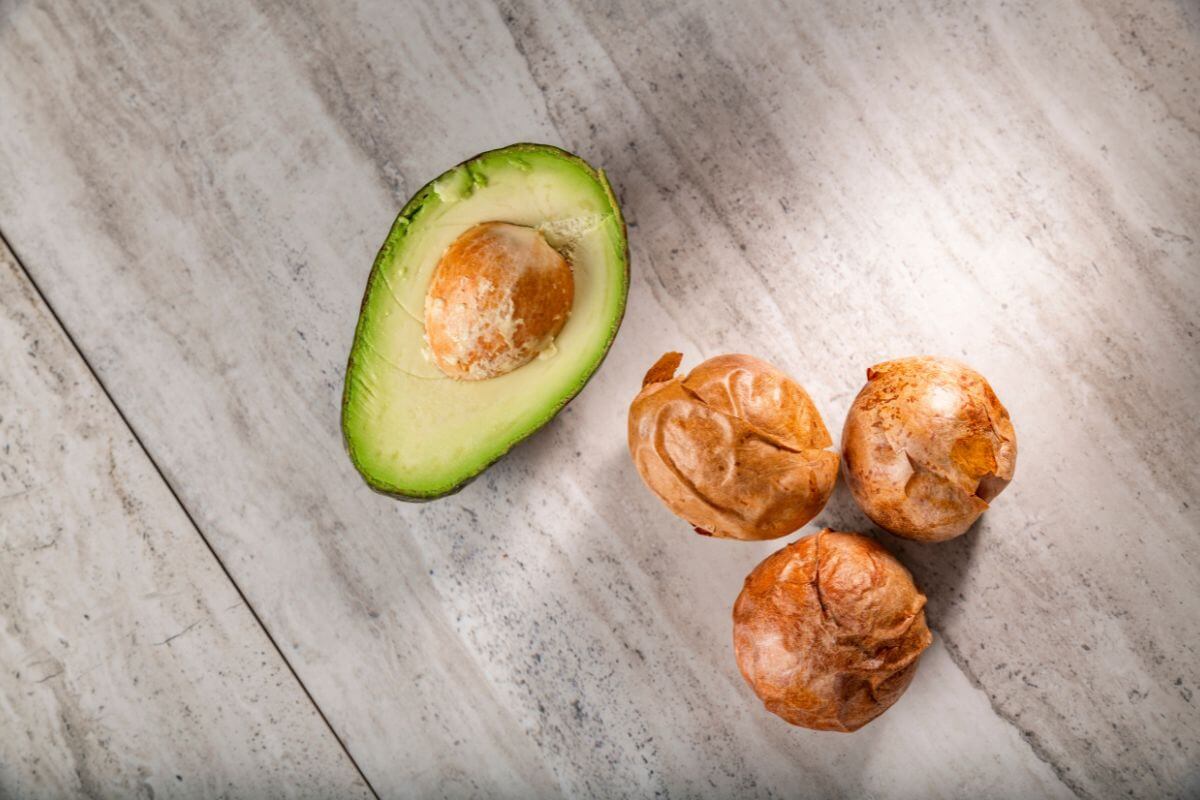
Benefits of Growing Hydroponic Avocados
- Your avocado plant will reach maturity faster and begin to bear fruit in a shorter time frame.
- Avocado trees generally need a big area to be planted in. With hydroponics, you can grow more avocado trees in a smaller space.
- There are fewer pests that are exposed to your avocado plant.
- Your avocado plants will avoid soil-borne diseases with hydroponics.
- You can grow avocados throughout the year in a hydroponic system.
Drawbacks of Growing Hydroponic Avocados
- Growing avocados will require maintenance, pinching, and pruning to keep them at a shorter height.
- The equipment needed to grow avocados is expensive to purchase.
- Avocados eventually grow into big trees and they require a substantial amount of space to grow.
- Avocados take time to mature and produce fruits.
Equipment Needed to Grow Hydroponic Avocados
The equipment you will need to grow your own hydroponic avocados is relatively the standard hydroponic equipment. You will need:
- Grow light
- Air pump/ Air stone
- pH tester/ Digital reader
- Plant containers
- Growing medium
- Fan
- Heater
- Water pump
- Toothpicks
- Glass container
- EC meter
- Water piping
- Water reservoir with gallons of water
- Grow tray
How to Grow Hydroponic Avocados
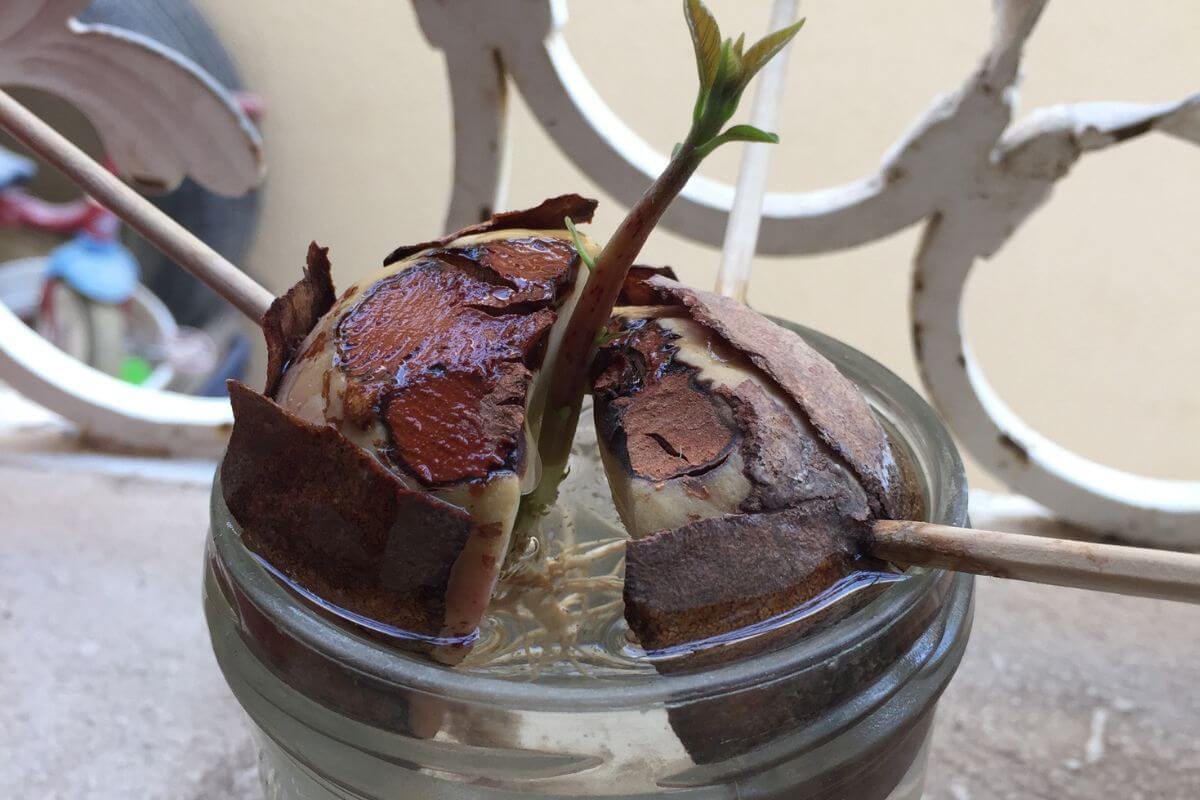
1. Choose the Avocado Variety to Grow
Just like most plants and trees, avocados have many varieties. These varieties have varied preferences in terms of climate, humidity, and soil mediums.
Popular avocados that are cultivated on a commercial scale are the following:
- Lila
- Has
- Bacon
- Brazos Belle
- Lula
- Mexicola Grande
For hydroponic growers that want to simply grow their own avocados at home, there are dwarf varieties of avocados that come in a more manageable size. These are:
- Reed
- Lamb Haas
- Little Cado
- Gwen
- Wurtz
2. Choose the Hydroponic Technique
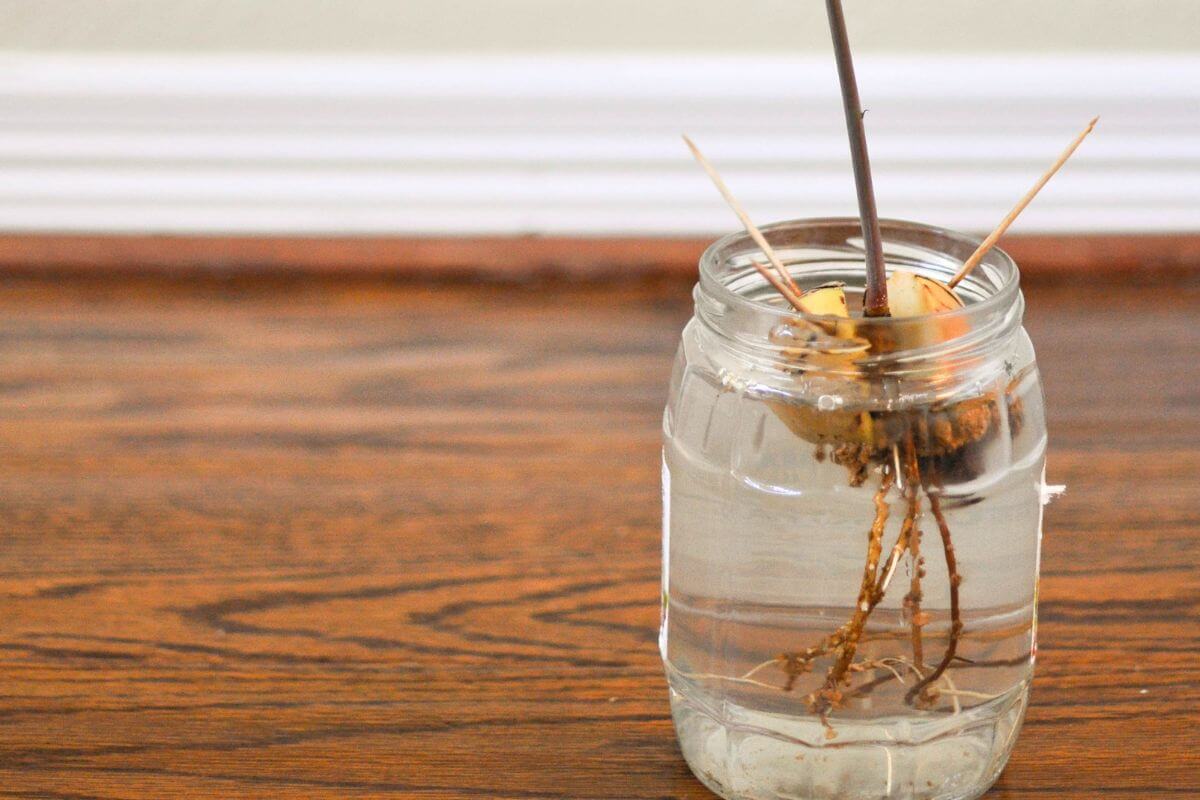
The right hydroponic technique to cultivate your avocado plants is an essential factor that you must decide on. There are several different techniques in hydroponics, the best techniques to use are the following:
Deep Water Culture (DWC)
Deep water culture (DWC) is by far one of the most suitable methods for hydroponically growing avocados. It’s a popular hydroponic system that doesn’t require extensive equipment.
The avocado plant is suspended above a container that is filled with nutrient-rich water.
The roots of the avocado plant will grow into the water solution and absorb nutrients as needed. Oxygen is supplied to the avocado roots through the use of an air pump.
DWC provides the perfect technique for growing an avocado plant. Large sums of water are required for a thirsty avocado plant. The method is pretty simple and anyone can grow their own avocados.
Ebb and Flow Technique
The Ebb and Flow technique is well suited for growing hydroponic avocados. The technique uses the flood and drain method. The roots of your avocado plant will be flooded with nutrients for a period.
The roots will have time to absorb the nutrients, and then the nutrient solution will be drained back into the water reservoir. This technique gives the avocado roots sufficient oxygen and won’t overwater the roots.
3. Light and Temperature Conditions
Because avocado trees require a substantial amount of at least 6 hours of sunlight per day, you will need to succor this requirement by installing artificial lights or grow lights if you have an indoor hydroponic system.
Avocado seeds that are still in the process of sprouting require more darkness than sunlight. It’s best to germinate your avocado seeds in a shaded area.
The optimal indoor growing temperature for your avocado plants is best between 60℉-85℉.
Avocados can withstand some humidity so you can keep humidity levels between 40-60%. If your grow room does get colder, older avocado plants can withstand colder climates of 28℉-32℉.
4. Water and pH Levels
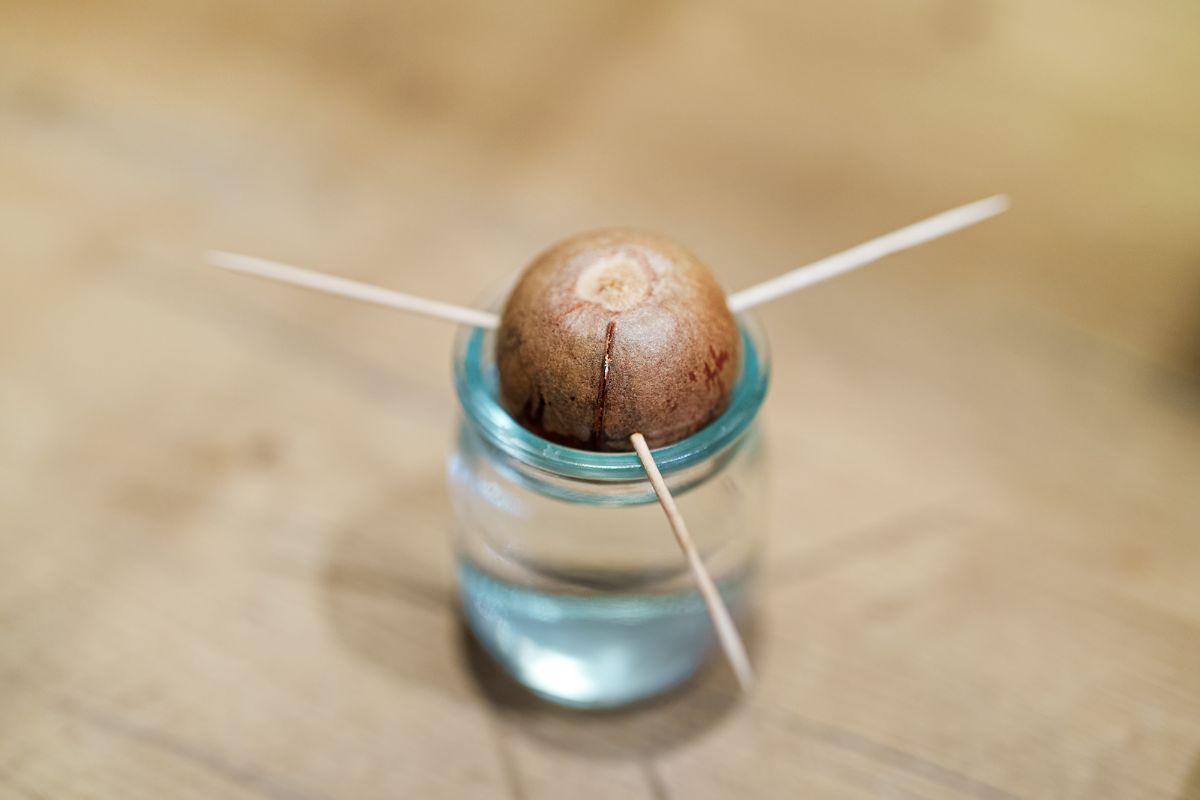
In a hydroponic system that is growing avocados, the recommended water pH level is 6-7 pH. Anything below or above that will affect the plant’s ability to absorb nutrients.
A slightly warm temperature between 65℉-78℉ is also preferred by avocados.
The salt content of your water should be at minimum levels. One way to know if the salt content is a bit in the high range is by observing your plant’s leaves.
Brown tips on the leaves mean that there is a salt buildup and you should adjust the water’s salt content.
5. Growing Medium
Avocado trees, even the dwarf ones, will grow quite large up to 80 feet tall even in hydroponic systems. Their rooting system will need a strong growing medium to provide them support in a hydroponic garden.
The best-growing medium to grow hydroponic avocados in is clay pellets or clay balls.
Clay pellets are pH neutral and provide the support that is needed for your avocados’ large roots. The only disadvantage of using clay pellets as a growing medium is that they don’t retain any moisture.
6. Nutrient Solution
The best nutrient solution for growing hydroponic avocados is a solution that contains nitrogen, potassium, and phosphorus.
Avocados need a substantial amount of nitrogen in their nutrient solution. However, too much nitrogen can cause the plant’s leaves to burn.
The best nutrient mixture to feed your avocado plants is an N-P-K (2:1:1), this solution provides all the basic nutrients and avocado plant needs.
7. Pollination
Avocado trees produce a multitude of flowers.
The flowers of the avocado plant have both male and female parts, which makes self-pollination possible. There are two types of avocado plants that produce pollen.
The first type of plant releases pollen in the morning and is receptive to being pollinated in the afternoon.
The other type of avocado tree releases pollen in the afternoon and is receptive to pollen in the morning, so it makes sense to grow more than one avocado plant.
Pollination can be done by taking a cotton wool swab of pollen from your one avocado plant and touching the other avocado tree flowers with the pollen.
Some growers will cut a flower off one avocado plant and gently rub it against the flowers of another plant.
8. Pruning the Plants
Your avocado trees will tend to grow tall and have a few leaves. To keep them from growing too long keep the top of the avocado tree trimmed. This will assist you in managing a sizable plant for your hydroponic system.
A rule of thumb is once your avocado stem reaches 8 inches tall, you need to cut it back by 3 inches.
Pinching can also be done to keep avocado trees bushy and full. You need to pinch out the tree’s terminal bud to bring to life the buds that are dormant along the branches of your avocado tree. This will cause it to grow outward rather than upward.
9. Propagating the Plants
It’s always best to buy avocado seedlings from a nursery and transplant them into your hydroponic system. Avocados aren’t true to their seed, so using a seed from an adult plant won’t necessarily produce the same avocado.
Propagating an avocado seed can be done. Here are a few steps on how to propagate an avocado:
- Buy an avocado and remove the seed. Make sure to wash the seed but keep the brown skin intact.
- Avocado seeds have a round and flat side. Poke a few toothpicks in your avocado seed, with the flat shape in the bottom.
- Place the avocado in a glass container filled with warm water that is at about 65 degrees. The toothpicks will suspend the avocado seed at the top of the glass container.
- As with any plant, it is important to change the water after a few days. This will help the seed sprout and is a critical step.
- Transplant the sprouted seed into your hydroponic containers of ideal size. Remember to keep the root ball hydrated.
10. Harvest the Avocados

Avocado trees can take from 7-13 years to produce any sizable harvests. Hydroponic avocados can start to produce fruits in 3-5 years, this cuts the process almost in half.
Harvesting your avocados is simple, sometimes they will even fall off the stems.
When your trees are ready to harvest, simply cut the avocado off the stems and place it in a cool environment. Always wash off the avocado before consuming it.
Troubleshooting Hydroponically Growing Avocados
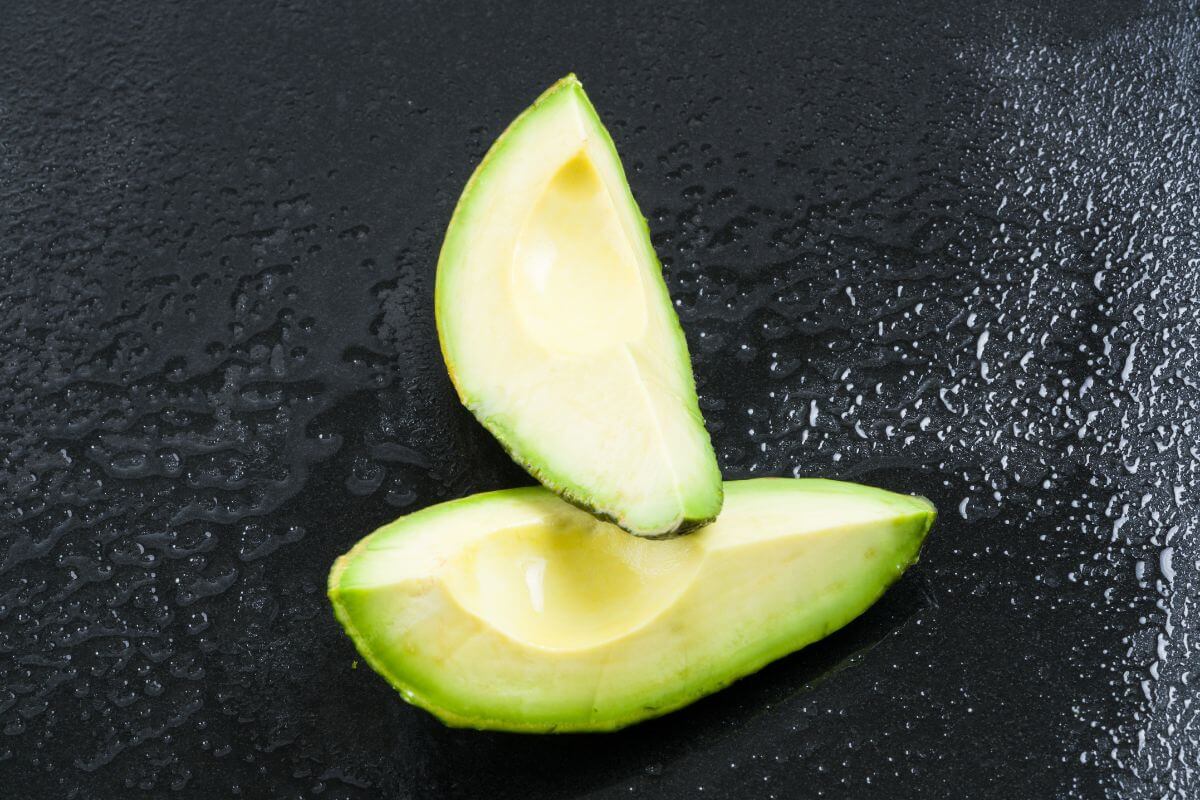
1. Common Growth Problems
Disease
Avocados are naturally thirsty plants and tend to require significant amounts of water. Their roots, however, don’t do well with poor drainage.
Root rot and other diseases will affect your avocado’s health should there be poor drainage or a lack of oxygen supplied.
Leaves Turning Purple
Another common problem that is experienced with growing hydroponics is their leaves turning purple. Avocado leaves are naturally green but they turn purple when there’s a lack of phosphorus in their nutrients.
Scrawny Avocado Plants
Growing avocados indoors can result in your avocado tree having fewer leaves and stunted growth. Trim the tops of the leaves of your avocado plant when it’s younger so it can become bushier.
2. Commons Pests
Caterpillars love to eat the leaves of your hydroponic avocado plants, thankfully they aren’t really a problem with indoor hydroponics. Some of the most commons pest to look out for in your hydroponic crop are:
- Thrips
- Brown mites
- Tingidae
- Leaf roller
- Fruit-spotting bug
These pests can be prevented by spraying pesticides regularly on your avocado plants. It’s best to use horticultural oils or pesticides.
To get rid of mites, use sulfur oil emulsion sprays. It’s effective against most mites that could plague your avocados.
3. Common Diseases
The most common disease that will affect your hydroponic avocados are:
Root Rot
This disease is caused by a fungus that attacks the rooting system of your plants. It easily is noticed by the lack of greenness in the color of your leaves.
This disease creates a thick slime on your plant’s roots and starves it of oxygen. There is sometimes a pungent odor from the smell of your roots rotting.
Root rot will quickly spread throughout your hydroponic system and kill all of your plants.
To prevent Root rot from forming on your avocado plants’ roots, ensure that there is adequate drainage and a strong supply of oxygen to your roots.
Powdery Mildew
Powdery Mildew is a fungus that thrives in dry humid conditions. Your hydroponic system can often create high levels of humidity.
The fungus is easy to spot, as it looks like someone has thrown flour all over your leaves and stems.
Prevent the presence of this life-threatening disease on your avocado plants by keeping the humidity levels in your hydroponic garden to an amount lesser than 50%.
Avocado Anthracnose Disease
Avocado anthracnose is a disease that affects the leaves and fruits of your hydroponic avocado plants. The disease is caused by a fungus called “Colletotrichum Gloeosporioides”.
The disease can be prevented by planting avocado seeds that are disease-free. Spraying fungicides on your avocado leaves and stems will also prevent this fungus from infecting your hydroponic plants.
Final Thoughts on Growing Hydroponic Avocados
Although avocadoes are not your typical hydroponic system produce, it is surprising to know that this crop can now be propagated using this method.
Growing avocado in a hydroponic garden cuts down a significant amount of time in growing this delicious and nutritious fruit.
When you are able to provide the sunlight, water, pH levels, and temperature needs for this plant along with other factors, you are sure to create a space where avocado plants are able to thrive and be healthy.
If anything goes wrong, pay attention to physical signals such as brown leaf tips and you will be able to figure out what needs to be adjusted.
Say goodbye to traditional soil-based farming methods and revolutionize your garden by trying the hydroponic way.
To know more about growing hydroponic avocados, check out these amazing articles:

